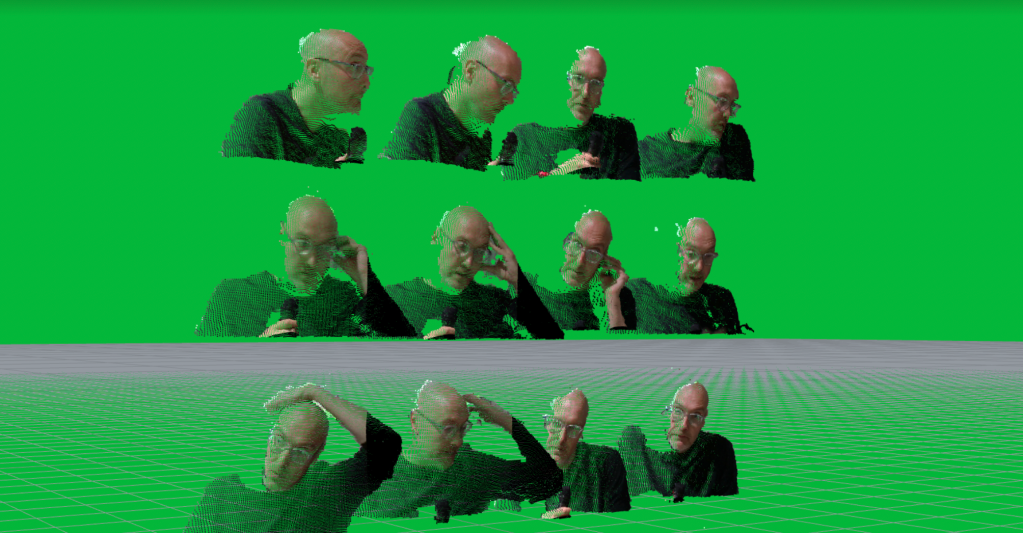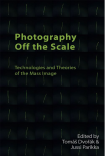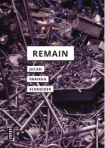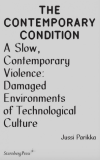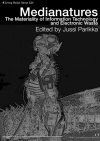Antikythera
The new Antikythera program headed by Benjamin Bratton launches, and I am happy to be involved as affiliated faculty.
It is a “program reorienting planetary computation as a philosophical, technological, and geopolitical force” and you can check out the website for details as well as how to apply. The selected studio participants (Los Angeles) will be fully supported with a housing provision and a monthly stipend of 4000 USD per month. The program also covers the additional research and field trips.
Astronomical imaging to operational images
A short excerpt from the forthcoming Operational Images book (University of Minnesota Press, 2023), on early 20th century astrophotography as it offers a glimpse into an alternative lineage of operational images, planetary computation, and data/measurement.
“However, discussing Leavitt gives us insight into the work of remote sensing and images that become operationalized for data analysis, in addition to dispelling the often overly male-inventor and scientist-focused narratives (including those concerning operational images). This applies to many of the other contributions too: the photographic plate collection becomes the scaffolding for advanced work in spectral classification and cataloging (Annie Jump Cannon) and remote sensing (calculation of “chemical composition of stars” in Cecilia Payne-Gaposchkin’s work), alongside the Leavitt Law as an example of operational images, too: “a tool to calculate distance in space with the use of Cepheid variable fluctuations.” Leavitt’s and others’ contribution thus is not so much on photography as a particular technology or genre of images but as the basis for an analysis of data and an extraction of features that become significant for questions of remote sensing. Such work becomes part of the lineage of operational images that are less interesting as images on their own but rather as part of a broader infrastructure of skills, labor, techniques, and technologies, and how institutions assemble images for their particular needs and uses.”
[…]
In our example of the astronomical something shifted when light was observed, recorded, and sent across a geographical distance—perhaps a lot of things transformed from the planes of observation and appreciation of high altitude air and clear skies to the photographic exposure and the plates that became one chain along the way before Leavitt, Cannon, and others interpret and synthesize (compute) these into the pithy but important results that ensued: “A straight line can readily be drawn among each of the two series of points corresponding to maxima and minima, thus showing that there is a simple relation between the brightness of the variables and their periods. The logarithm of the period increases by about 0.48 for each increase of one magnitude in brightness.”

Plate 1 and Figure 1 from Leavitt and Pickering’s 1912 article “Periods of 25 Variable Stars in the Small Magellanic Cloud.”
Where is the image here in this diagram, in such a description? On the photographic plates or their analysis, the moments of exposure in the Peruvian landscapes, in the logistics of transporting those images to Cambridge, in the trained analysis of composite photographs, or somewhere else along the way of transforming light? Or, perhaps, the notion of operational ties together a multitude of such material events, sites, and their abstractions and assembles them into a useful notion of the operational image that, as a term, itself is invented much later and for a different purpose, but might itself become useful to speak of infrastructure, logistics, and images that transform from visual to invisual, from ways of seeing to ways of calculating.
New Czech titles
Now published in Czech, two closely connected books: the translation of What is Media Archaeology? (transl. Michal Šimůnek) and Martin Charvát’s book about my work Jussi Parikka: Od archeologie ke geologii médií (“Jussi Parikka: From Media Archaeology to Geology of Media”). Very excited and grateful to both of them for their work, insights, and careful attention.

The publisher is NAMU press.
Below a short glimpse of the interview we did with Martin for his book (note that the original English discussion has not been tidied so please excuse any minor language hiccups).
<M. C. As I see it, in your work there is a strong tendency present: from the analysis of „dark sides“ of digital culture to geology of media, to the (on the one hand) abstract but strictly material frameworks (or empirical conditions of possibilities) of contemporary digital culture based on using (in a sense of dependency) material from Earth, and to the (on the other hand) urgent need to look at these phenomena through (to put it in Deleuzean terms) “geology of morals”, which transcends a priori critique of technique, and thematizes the usage or cultural techniques emerging in contemporary society and connect them with geo-political climate.
J. P. I was originally trained in Cultural History (in Turku, Finland) which was great background education to consider the broader historical contexts of contemporary culture. It was also a context where I had to do extra work in figuring out how I can continue my theoretical interests while engaging in historical methods. One line of thought that cuts across those themes, those tendencies, is that I am interested in the anomalous, whether that is in relation to the dark sides and accidents of technological culture or in terms of the alternative methodological and conceptual angles that unfold a different perspective. The Deleuzean impact was early on really important for me – I still remember well the course on Deleuze (and a bit on Guattari) that professor Jukka Sihvonen gave in Turku and that I attended together with my friend, media scholar Pasi Väliaho. It was an eye-opener. I did not know how to place it exactly in terms of my other studies but it crept into some work I did in Finnish (including a book that was published in Finnish, Koneoppi) and then to some themes in Digital Contagions that was also my doctoral project that later turned into a book. Another influence was Friedrich Kittler, also introduced by Sihvonen, and whose work then became a different way of trying to start thinking questions of materiality which led into discussions also in new materialism from a much more material feminist position. Rosi Braidotti’s seminars in 2005 were another eye opener.
But in terms of the theme of the anomalous – it does not necessarily mean even marginal. Just that from Digital Contagions to later work, I was trying to come up with questions that are not necessarily at first obvious; conceptual twists that offer different perspectives while building on existing theoretical and scholarly traditions, but also rhetorically are able to frame a different way of understanding those conceptual entities inside “media studies” but also way outside it.
The geopolitical that includes Earth energies is far from marginal but I felt a necessary way to continue the link between conceptual work, extended media studies perspectives, and burning contemporary topics. I was trying to avoid it being merely a contribution to the Anthropocene debate about this new geological period defined by industrialism, synthetic chemistry and massive scale of agriculture, the nuclear age and mass exterminations of multiple kinds – including as many have pointed out, colonial time scales – and think of ways how the question of materiality can be placed in questions of ecology. Geology of morals turns into a Robert Smithson inspired large-scale, landscape-scale changes impacted by media and technological culture that also challenges models of agency and definitely forces non-anthropocentric perspectives both in analysis and in coming up with ethical solutions. To riff with Braidotti’s ideas: it was the ideal of the human in the modern Western humanism that got us into a lot of trouble with its colonial human (able-male) centric ways of organizing worldviews; now we are in the midst of a larger transformation where other questions have to be brought forward for a more radical sustainable future.
[…]
M. C. Currently you are the head of GAČR EXPRO project at Prague Famu. Could you elaborate please a little bit about the topic of the research? (Operational images)
J. P. Operational images is a concept that stems from the filmmaker Harun Farocki’s work and investigations. Already in his work in the 1980s and 1990s he mapped visual forms of measurement and rationalization of the world in relation to political history, violence, holocaust, and industrial scale violence although the concept emerges in a more articulated form in the Eye/Machine video series of installations between 2000-2003. While Farocki’s work is interesting as such – in how it articulates themes of proximity/distance, visuality/calculation, war/media – our project picks up on the concept itself: operational images as images that function primarily as part of a (technical) operation like in the case of self-guided missile systems, machine vision systems, robotics, etc. The concept has had a vivid afterlife following Farocki and it pops up in use by theorists and artists such as Hito Steyerl and Trevor Paglen, as well as in works by many of the colleagues in media studies etc., but we are interested both in how to use it as a concept to outline alternative histories of photography and visual culture and to open up new questions in contemporary contexts of art and visual theory.
For example, I am working with Abelardo Gil-Fournier on outlining questions of vegetal materiality and visual culture, from late 19th century plant physiology and framing of photosynthesis to broader scales such as in Vladimir Vernadsky’s take on the planetary biosphere. We are interested in how from questions of photography and visual culture we can outline a take on operational images in scientific contexts, planetary scales of plants and agriculture, and this refurbishing of the planet by way of terraforming that has taken place for example indeed in agriculture.
Of course the project incorporates more than that. Tomas Dvorak’s investigations into photography as measurement is one insightful way of dealing with the overlap between methods in history of science and media; previously, our conference theme was on Expert-Readable Images expanding the idea of machinic agency of images (Machine-Readable) to the work of experts and specialist practices too. Also our book Photography off the Scale that came out in 2021 with Edinburgh University Press included contributions from our project team on the question of measure, scale, and quantity in photographic culture.
The book Operational Images. From the Visual to the Invisual is forthcoming from University of Minnesota Press in 2023.
The Lab Book is out!
I am very happy that our co-authored The Lab Book: Situated Practices in Media Studies is out. Written with Lori Emerson and Darren Wershler, the book stems from research that started around 2015 and investigates the changing status of the lab as it features especially outside the fields of science and engineering. The mushrooming of labs of all sorts – and not all only academic, as many coffee labs, brew labs, and hair labs testify – has resulted in a situation we refer to as the hybrid lab. The many aspects that make up the hybrid lab are captured in this diagram on the extended lab, a model that also guides our book’s chapters

We are also grateful for the several dialogues, interviews, and other help that several people affiliated directly or indirectly with labs provided. We were able to test our ideas and get really important feedback from so many different lab setups that also showed the many scales of labs. Some of the interviews are available on University of Minnesota Press’ Manifold platform.
Do get in touch with any queries, review copy requests, or alike.

“Lively, timely, and filled with vivid examples, The Lab Book is a highly readable and critically sophisticated account of current lab culture. Written by three distinguished practitioners, it examines the rhetoric that links real and imaginary ideas of experimentality with systems of power and authority across a surprising range of disciplines. A fun, smart, useful guide to ongoing work in media studies.”
— Johanna Drucker, author of Visualization and Interpretation: Humanistic Approaches to Display
“The Lab Book makes an extremely important contribution to contemporary discourse about the production of knowledge. In many ways, it is the most important book on the topic since the laboratory studies of Bruno Latour in its potential reach across disciplines and methodologies. Its careful close reading of images and quoted material is particularly compelling, and the writing style is accessible and clear, even while explaining somewhat arcane topics in science studies around infrastructures, apparatuses, ideologies, and assemblages.”
— Elizabeth Losh, author of Hashtag
Words of Weather out soon
As part of the Weather Engines exhibition we have edited the book Words of Weather, a glossary for terms for weather , out soon in English and Greek. Details where to order coming soon. Below a sneak peak at the wonderful roster of contributors and terms.
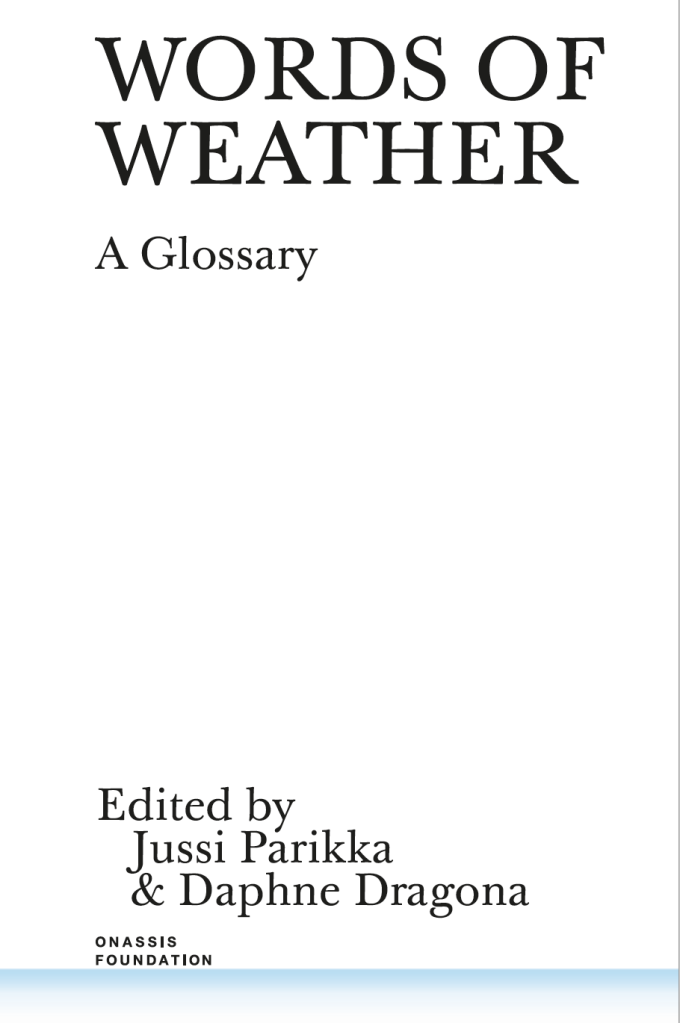
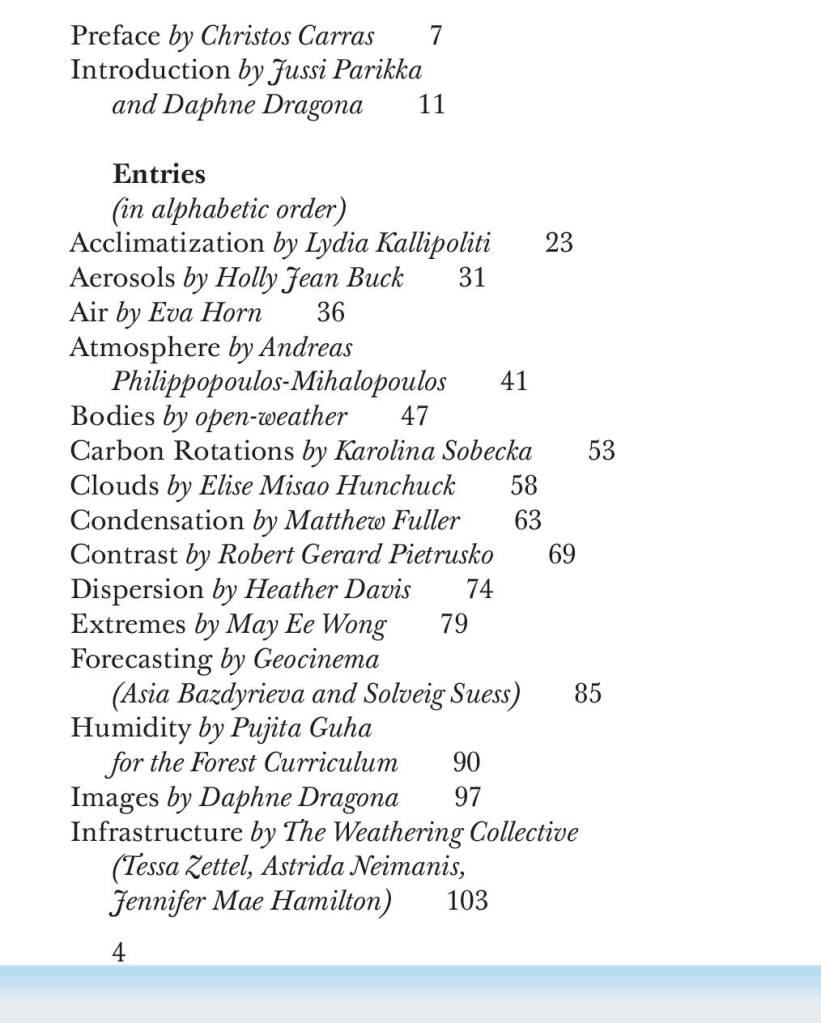
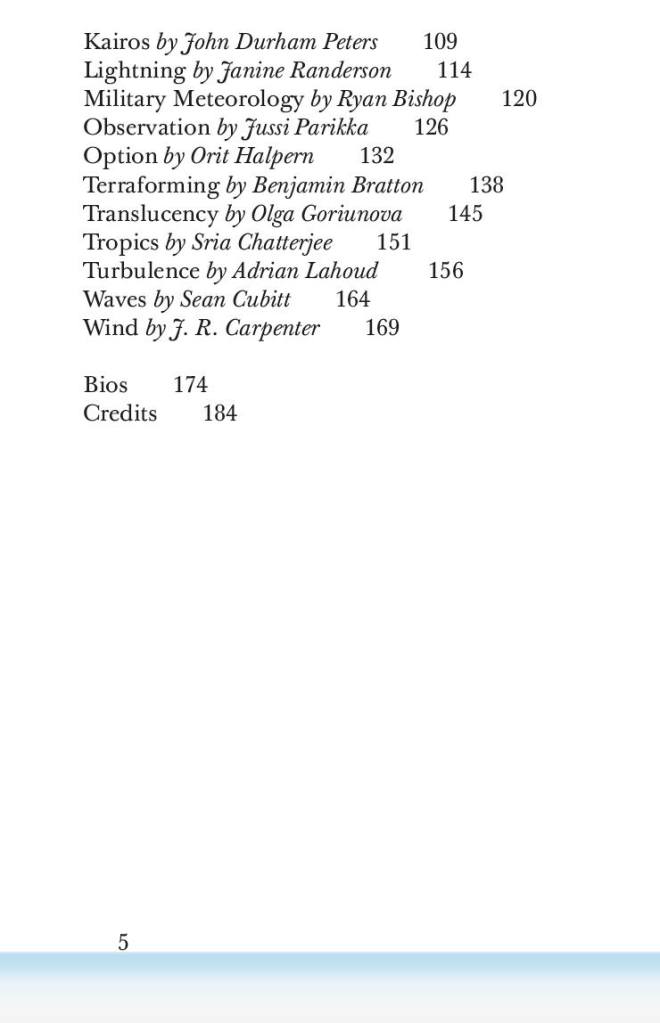
Operational Images – Preface in the forthcoming book
I submitted the manuscript for the book Operational Images (part of our project Operational Images and Visual Culture) to the publisher, University of Minnesota Press. The book is forthcoming in 2023, but for those of you interested in a sneak preview, please find below the Table of Contents and the Preface (without the endnote references though) that starts the book.
Table of Contents
Introduction: Between Light and Data
Preface: Operational Images, All the Way Down
Chapter 1: Operations of Operations
Chapter 2: What is Not an Image? On AI, Data, and Invisuality
Chapter 3: The Measurement-Image: From Photogrammetry to Planetary Surface
Chapter 4: Operational Aesthetic: Cinema for Territorial Management
Chapter 5: The Post-Lenticular City: Light into Data
Chapter 6: A Soft Montage of Operations
Preface: Operational Images All the Way Down
This book focuses on operational images, a concept that first emerged in Harun Farocki’s audiovisual work (films and video installations) and writings. The often-voiced but almost as often insufficiently developed definition is simple, and it is already somewhat evident in the term itself: there are some images that primarily operate; they are not necessarily representational or pictorial. Operational images trouble what an image is, as far as it shifts from representational to non-representational, from the primacy of human perception of bodies, movement, and things to measurement, pattern, analysis, navigation, and more. They change the scales and terms of reference. Such images have an epistemic force, while they also are involved in an intervention in the world, whether directly or indirectly. These sorts of images fix epistemic details, but while they hold them in place, they also are mobile in ways that become an essential part of their institutional activity. These points are explored in the pages that follow.
Operational images appear most often in discussions of machine vision and automation of perception, where images are part of a broader system of analysis, identification, tracking, and destruction. The term operational image seemed to speak directly to the period from, roughly, the first Gulf War in 1990 to the current phase of military and security management of territories with drones as part of an ecology of observation, analysis, and surveillance. Even a brief survey of Farocki’s films and existing literature reveals these thirty years of militarized airspace and technological systems that incorporated much of the already existing logic of targeting would be a straightforward implication of the term. However, this is not to say that this book is primarily about war or airspace, or surveillance or drones–even if such are central parts of the theme that admittedly ranges much further in the past than just the context of smart weapons and machine-readability of landscapes, territories, and objects (including people). It was also not the sole interest in Farocki’s work, especially if we consider how, for him, operational images emerged in architectural modeling, traffic control systems, construction of affective environments such as malls, and other examples that have also paved the way toward current topics of AI culture. Furthermore, this book is also not merely about a particular class of images that emerge in high-tech contexts, even if, again admittedly, it is about visual culture and its transformation into invisual data culture. We are not seeking an aesthetics or politics of digital images. There are plenty of books on these topics already, and many of them are consulted and discussed in this one, too. Thus, there is no need to write yet another take on digital visuality or digital images, or perhaps even about visual culture.
This book is about a needed shift in emphasis to the operational image. From a discussion of the image, its particular formats, and even its functions, we move to a different, albeit closely related question that concerns operations, a key term that ties to infrastructures, logistics, and all manner of actions that function to sustain, mobilize, analyze, and synthesize the thing we have grown to call “images”. I am after the coupling of perception and action, of images that control, regulate, and amplify how bodies operate.[1]
Both perception and action are terms defined in the course of this book: perception is not tied to any natural experience, optical capacity, or even a technique, and the action in question is not necessarily only the here and now of a human body but defined by more tricky causalities–including a relation to the temporality of futures, future-pasts, recursions, and more. In other words, operations do not act only on the present but across a broader timescale, including a temporalization of space (e.g., in forecasting systems).
Allow me to offer a guiding rhetorical figure that should be considered throughout this book as part of its conceptual scaffolding.[2] Operationalism is already an established term in scientific methodological literature[3], but also consider the rather famous and often overused parable of the turtle at the base of the universe. The narrative comes and goes in different forms, this one written down in Carl Sagan’s Broca’s Brain:
“Some ancient Asian cosmological views are close to the idea of an infinite regression of causes, as exemplified in the following apocryphal story: A Western traveler encountering an Oriental philosopher asks him to describe the nature of the world: “It is a great ball resting on the flat back of the world turtle.” “Ah yes, but what does the world turtle stand on?” “On the back of a still larger turtle.” “Yes, but what does he stand on?” “A very perceptive question. But it’s no use, mister; it’s turtles all the way down.”[4]“
Instead of turtles, the history of photography, technical images, and visual media could be told in the same key: instruments built upon instruments, upon infrastructures, upon practices, upon techniques, upon further instruments and infrastructures, and so on. Operations built on operations that include elements that are material and semiotic, forms of knowing, and forms of mattering. As Geoffrey Winthrop-Young points out, such turtled ontology is also shared by the cultural techniques approach in media theory, concerned with “operational sequences involving actors, things and practices that, coming together, give rise to established cultural practices.”[5] Could the same then be said about the operational sequences involving images? That there is a fundamental relational ontology at play, one that could be described by way of scaffolding operations? At the very least, we can confidently concur with Michelle Henning when she writes that “[t]he Victorian idea of the photograph as an image that makes itself no longer holds sway.”[6] This applies to the specific fantasy of unmediated images drawn by sunlight and practices of sensing and registering signals as images and diagrams.
Joseph von Fraunhofer’s 1810s invention of the spectrometer–a later backbone of remote sensing and the analysis of materials through their spectral fingerprint–represents but one case from the alternative history of visual technologies. To verify and measure the dark lines existing in the solar spectrum–later named Fraunhofer lines–the spectrometer apparatus was an assemblage of multiple elements, camera-like technologies (six lamps and a shutter), a prism, and a modified theodolite: “an ordnance surveying instrument originally designed to measure angles for the production of maps.”[7] As Susan Schuppli writes: “His work would eventually come to be used by scientists to determine the chemical composition of a remote object–our sun, some 149.6 million kilometers away–not through direct testing but by treating it as an image, one whose chromatic variance could be translated into the complex language of chemistry.”[8] Treating the world as an image beyond its pictorial qualities is one key site where operations of epistemic value take place–but there are multiple operations already in place that produce such images. Fraunhofer’s laboratory set-up can be described as an essential part of the history of science of discovery of the qualities of the solar spectrum, but as an artificial set-up of said spectrum, it is also a microcosmos of light–even of interplanetary light. It is a simulation of the behavior of solar light, too, which then introduces the possibility of using this standardized view of the dark lines on the continuity of the spectrum to scale up and down across light and materials. All sorts of material instruments and scalar operations are piled upon each other, explicated and implied.
As photography (and yet not entirely just photography), Fraunhofer’s apparatus was a camera of sorts–one built like turtles on top of each other. I would go so far as to say that Fraunhofer’s apparatus represents one central instance of the history of operational imaging vis a vis remote sensing[9] and that what was captured was not a picture in the traditional sense but a microcosmos (or a condensation of its visual characteristics) through a detailed concrete arrangement that facilitated this diagram of the abstraction to emerge, and it demanded a precise need for accuracy in the placement of angles and distances, a measurement-operation in its own right.[10]
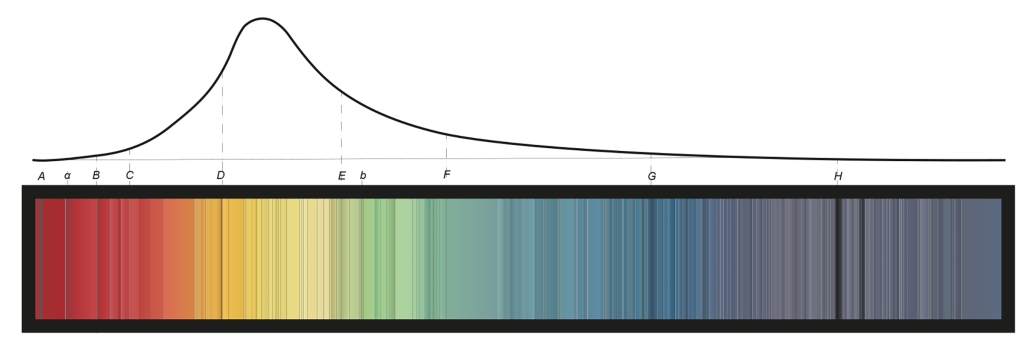
The recursive world of turtles and their relations–or camera-like instruments in laboratories and solar light–is a helpful figure of thought. At the same time, a more conceptual reference point for such operative chains of support is likely to be found in the theoretical work of cultural techniques and operative ontologies. But more on that later.
To answer the question that likely has emerged, what is this book about? It is not about turtles, but operations all the way down: images that exist only because of other operations–and the operations that help us to understand the transformation of images from visual to data. One could justifiably argue this point about cinema already, as Thomas Elsaesser speculates about Farocki’s interest in simulations as not a replacement of reality but a chain of synthesis–“the downward spiral of simulation of a simulation of a simulation”[11]–that pertains to cinema and post-cinema. In our case, we instead place emphasis on the operational transformation of the link between visuality, photography, spectral analysis, and data–a transformation that did not happen with digital culture, but circa 1900, as the story that follows will show you.
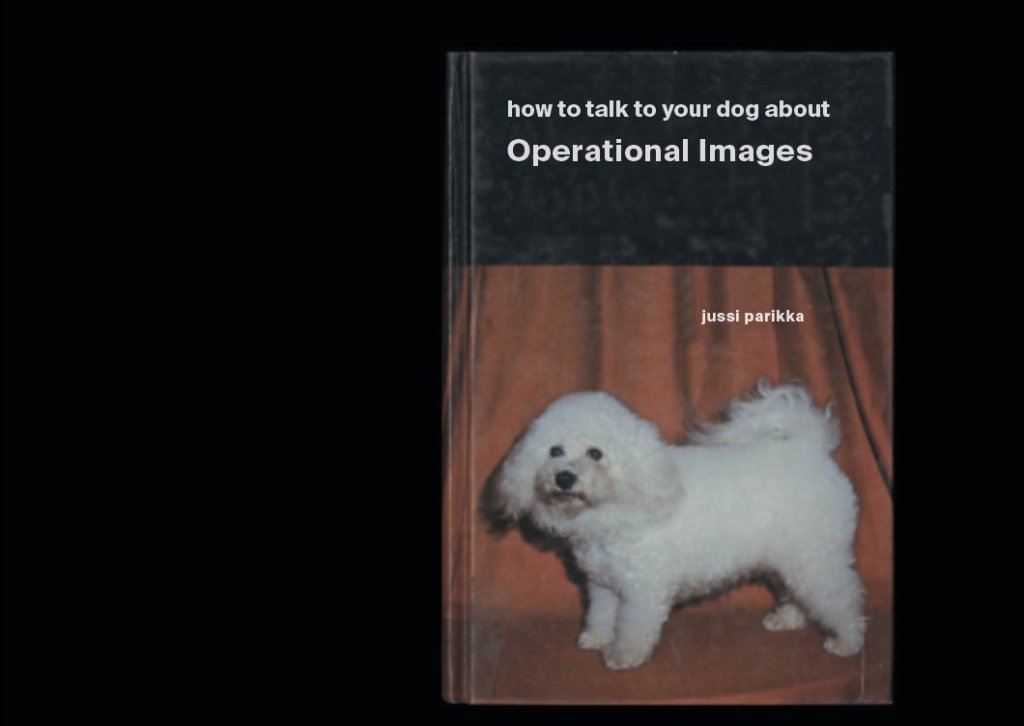
Trois essais sur l’écologie des media – translations in French and Spanish
Two new translations of my work came out from the printers just before the winter holidays. Two collections consisting of three essays of mine are published in French (T&P Publishing, Paris) and Spanish (Mimesis, Chile) with both of the editions complemented by a new preface by Peter Szendy. A brief quote from Szendy’s wonderful text (in the French edition):
“Les miettes, les rognures, les déjections qui restent et que ces trois textes cherchent à penser ne sont pas à strictement parler les résidus d’un repas, c’est-à-dire d’une ingestion et d’une digestion organique. Les commensaux qui, dans ces pages, consomment et jettent ou rejettent ne sont pas des vivants humains ou animaux : ni mammifères, oiseaux ou insectes, ni même bactéries ou virus (quoique le virus et l’insecte soient ailleurs l’objet des réflexions de Jussi Parikka, par exemple quand il s’intéresse à la généalogie du modèle de l’essaim en informatique ou à l’idée selon laquelle les contagions virales qui se répandent dans le monde numérique relèveraient d’un métabolisme ). Ici, les commensaux du grand festin dont L’Anthrobscène ramasse et analyse les restes, ce sont les médias eux-mêmes.”


More information on both of the new editions:
L’anthrobscène et autres violences – translated by Agnès Villette).


